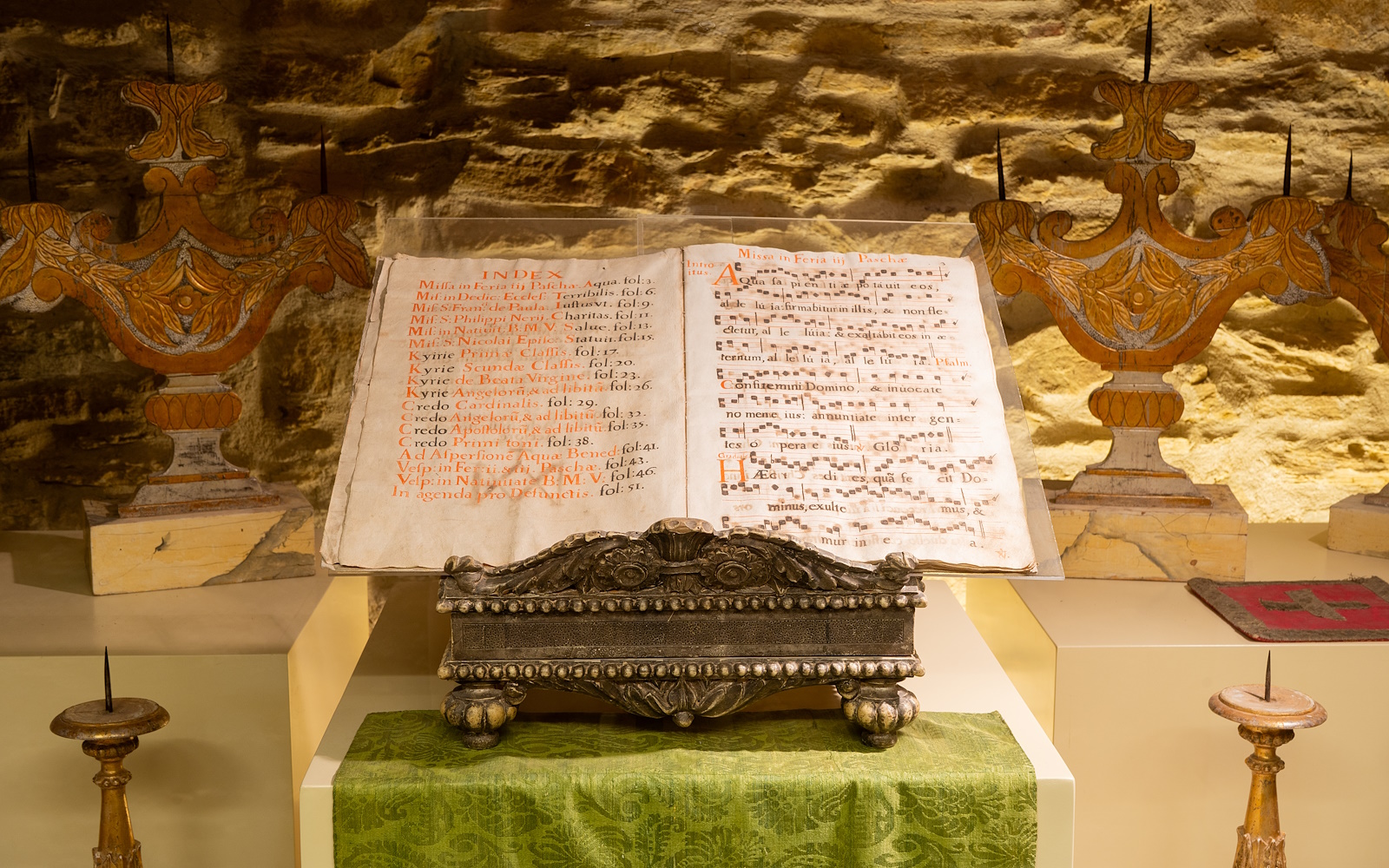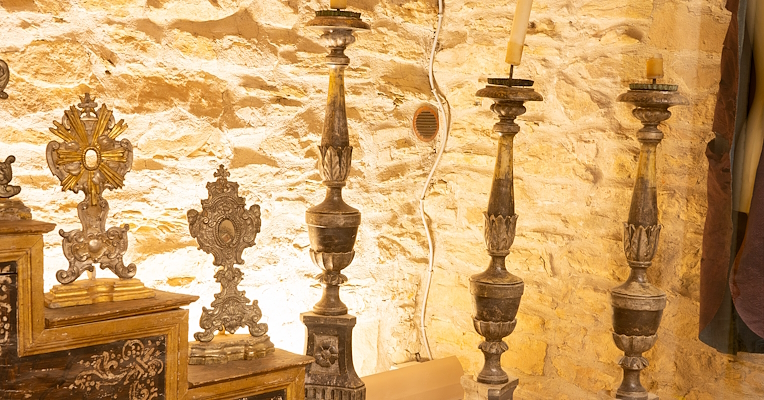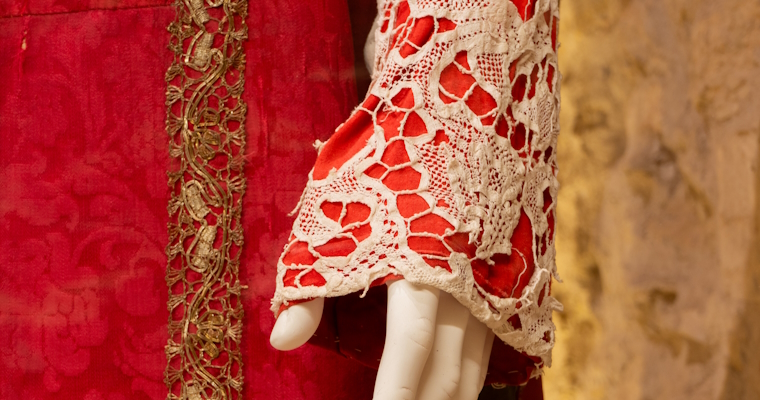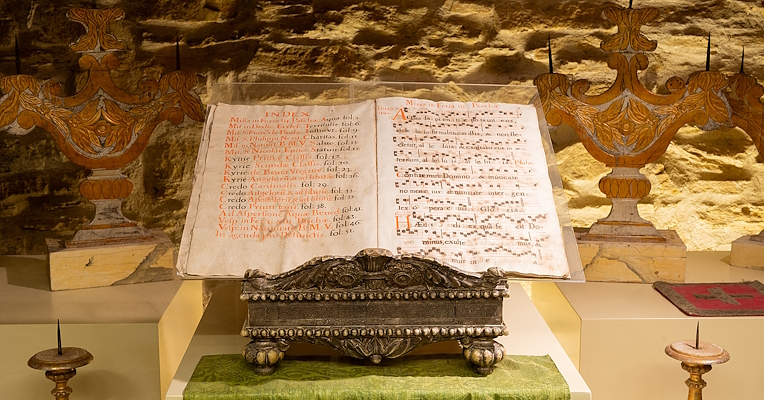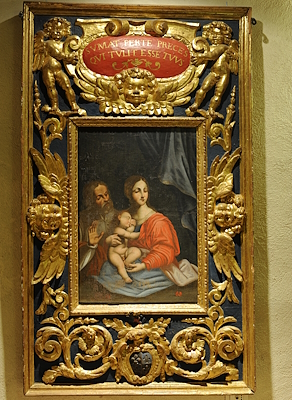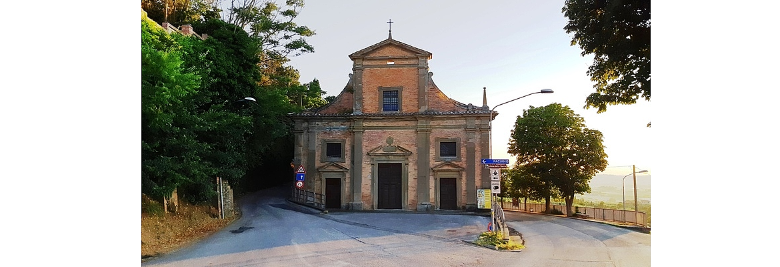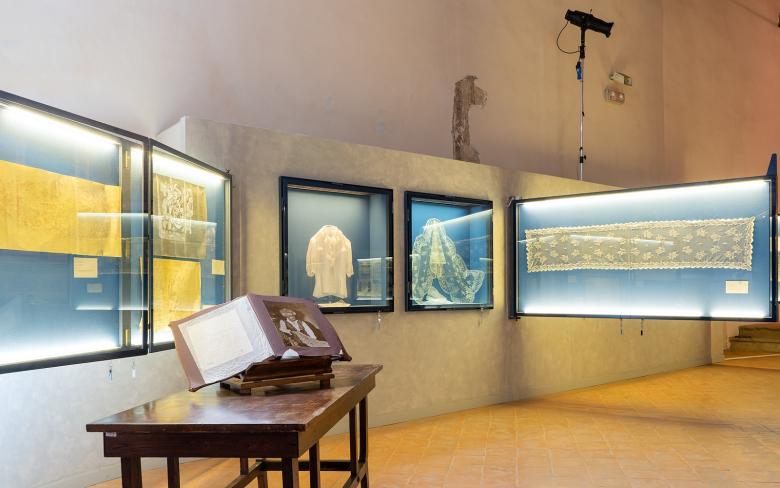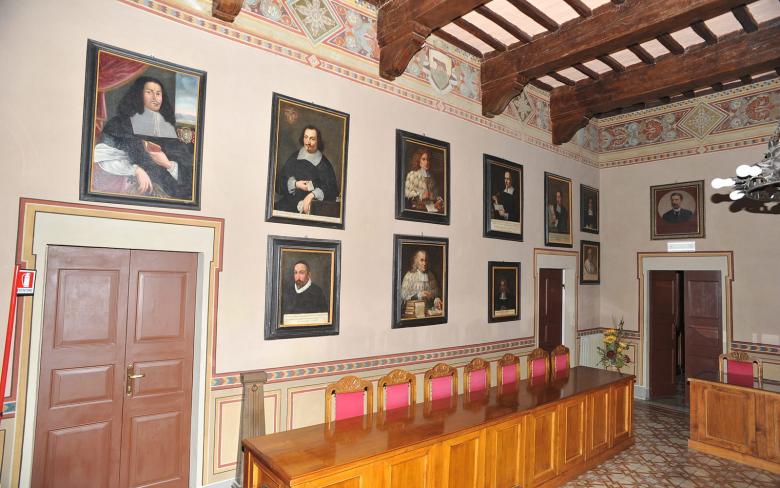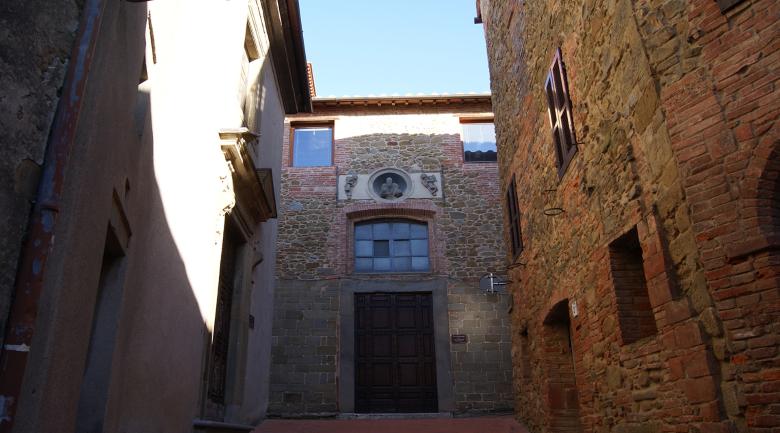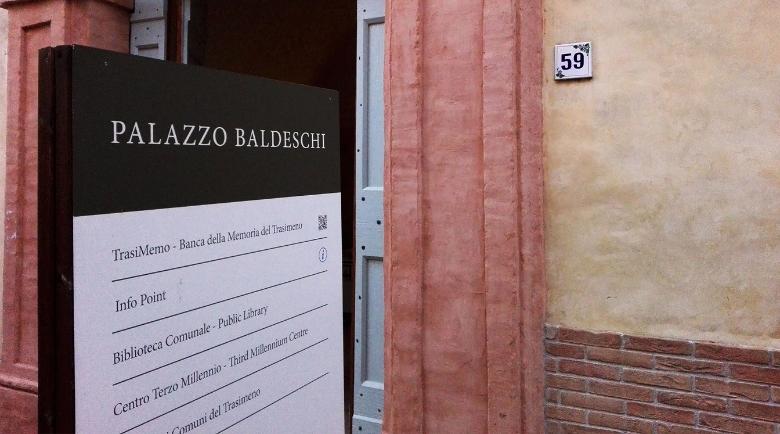Museum of The Madonna Della Sbarra - Panicale
The upper floor of the beautiful Renaissance church of the Madonna della Sbarra, where an ancient and modest hermitage organised in several cells once stood, has been used since 2003 as a Museum of Sacred Vestments, subsequently expanded between 2006 and 2007.
The museum itinerary, which houses valuable objects and vestments from the Church and other sacred buildings in the Panicale area, is organised thematically: in fact, it is also intended to be a documentation of how sacred rites were performed and the function of the various liturgical objects. Through its visit, for example, it is possible to understand how an altar is set up, how certain celebrations are performed, or how devotional statues are made and set up.
There are two exhibition areas in the museum, which are developed along corridors whose showcases are made from cells. Each showcase is organised thematically.
The exhibition area on the right houses an altar set up for a rite, monstrances, reliquaries, the procession, and the prelate's room; the other exhibition area houses the section dedicated to precious 17th-century vestments, made with gold thread, and other thematic showcases that relate to the rite of the ‘Quarantore’ and illustrate the various liturgical objects and their function in the celebrations. Between the two exhibition wings is a small room with a fireplace, which houses a painting of the Holy Family dating back to the 16th century, the work of a mannerist painter from the school of Cesare Pollino, with a beautiful original frame decorated with gold leaf.
























